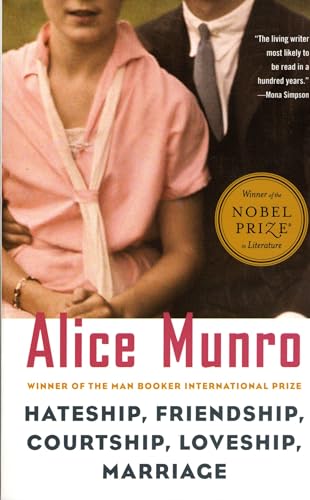Alice Munro Review: Small-Town Lives, Big Feelings
Hi, it’s Steve! Grab your coffee (or, if you’re me, that suspiciously old tea you keep finding at the back of the cupboard). Today I’m excited to talk about the book ‘Alice Munro’. This review will poke around Munro’s sharp look at human relationships, her sneaky storytelling style, and those oh-so-real small-town Canadian settings. I read this with a couple of friends—one of whom tried to skip ahead and got lost (classic Greg). But hey, more on that later. If you like stories about real people who mess up, dream, and sometimes just stare out windows thinking about lunch, Munro might be your next best friend. Let’s get into it (and don’t worry, I’ll tell you what works… and what drags a bit).
In a nutsheel
Alright, let me set the table. Alice Munro is the queen of short stories, and this book proves why. She writes literary fiction that tips its hat to everyday life, but then throws your hat out the window. You get stories about regular people facing not-so-regular problems.
The book bounces between themes like growing up, family drama, heartbreak, and how everyone in small towns knows your business. Munro makes you laugh, think, and mumble, “Yup, that’s life.” If you love stories packed with emotions and sharp details, this book keeps delivering.
The Twists and Turns: Exploring the Complexity of Human Relationships with Alice Munro
If I had a dollar for every awkward family dinner I’ve ever endured, I could afford therapy after reading Alice Munro. Don’t get me wrong—I say that with love! Human relationships are messy, and Munro gets this better than anyone. She doesn’t write about people holding hands on a beach, but about folks who are quietly annoyed with each other on the car ride home. Her stories are filled with secrets, petty fights, and unspoken hurts. There’s always that one aunt who remembers what you did in 1998 and won’t let it go. If you’ve ever felt like your own life was a soap opera, you’ll feel right at home with Munro’s characters.
Munro shows us how people are sometimes both good and bad at once. She pulls apart families, friendships, marriages—you name it. Suddenly, you see how one tiny thing, like a badly timed joke, can change everything for years. I once borrowed my friend’s favorite mug and never gave it back. To this day, she still brings it up. Munro’s stories are full of these little moments that somehow matter so much. She taps into those emotions we try to hide, the ones that make us squirm in our seats. I felt seen, and honestly, a little called out.
So, if you’re into people being complicated, you’ll love reading about Munro’s characters because she captures all the feelings we wish we didn’t have. Now, let’s buckle up for the next section, where we’ll peek under the hood at Munro’s style and tone—bring your reading glasses and maybe some tissues!
Unpacking Alice Munro’s Storytelling Style and Tone
I once thought short stories were just quick little things, like snacks you eat before dinner. But then I stumbled across Alice Munro, and she hit me with a feast. Munro’s storytelling style is sneaky. She slides between different times, sometimes in one sentence. One minute you’re hanging laundry with her character, and the next you’re forty years in the past, watching a childhood memory pop up like a whack-a-mole. It keeps you on your toes. You can’t let your mind wander or you’ll miss a jump.
The tone Munro uses is kind of like your grandma when she’s telling you about her wild youth. It’s gentle, but there’s a sharpness hiding just beneath. She doesn’t shout. Instead, she lets small moments carry big feelings. I kept getting pulled in, expecting drama, but instead Munro gives you the aftermath of drama, or the awkward space before it. That little bit of realism makes her stories stick to your brain like gum on a shoe — and trust me, they stay there a while.
Munro bugs me a little, too. She sometimes takes a plot, flips it upside down, and then ends it before I’m ready. Don’t expect everything tied in a neat bow. But hey, that’s kind of the point. Her uncertain endings make you think for yourself (which, let’s be honest, is sometimes annoying when you just want answers!).
Next up, we’re rolling up our sleeves and peaking into the messy, lovable chaos of Munro’s characters. Get ready for some true emotional gymnastics!
Exploring the Rich Character Depth in Alice Munro’s Stories
Let me tell you, Alice Munro doesn’t just make characters. She sort of cracks them open and lets all the mess spill out on the page. I remember reading her story “Runaway” and thinking, “Wow, I know this person!” That’s Munro for you. She takes the lady at your grocery store or the guy who never mows his lawn and makes them so real you’d swear you saw them at your last family BBQ.
Munro is never lazy with her people. Every sigh, every awkward pause, every longing glance at a phone that doesn’t ring—it’s all in there. Her characters change, sometimes in ways that creep up on you while you’re desperately searching for your misplaced socks (or was that just me last Tuesday?). Even when a Munro character does something surprising—like running away or quietly plotting revenge—you get it. Because you’ve seen all the little hints, all the cracks in the surface.
When I shared Munro’s stories with my friends, we spent hours debating if we’d make the same choices her characters do. That’s the beauty: she doesn’t judge them, and neither can we. You start to feel for people you’d probably avoid at a party. Deep down, I think Munro gets that nobody is perfect—except maybe her ability to write people who aren’t perfect.
Next up, get your parka and snow boots ready, because we’re heading into the world of Munro’s small-town Canadian settings—and trust me, it’s colder (and juicier) than you’d think!
The Power of Small-Town Life in Alice Munro’s Stories
If you’ve ever sat in a greasy spoon cafe, sipped bad coffee, and watched as old folks argued about hockey scores, then you’ll feel right at home in Alice Munro’s small-town Canada. Munro takes the sleepy little places most of us drive through without blinking, and she turns them into the main act. She doesn’t just put her characters in a town; she lets the town shape them, squish them, and sometimes set them free.
The magic is in the details. You’ll find yourself smelling the wood smoke, hearing the crunch of snow under rubber boots, and dreading the gossip that moves faster than a cold. The setting isn’t just wallpaper—it’s an active part of every story, lurking behind the curtains and poking its nose in at the worst times. And Munro really nails the feeling of living in a place where everyone knows what your aunt did at bingo night. If you’ve ever wanted to know exactly what it feels like to live in a house your grandfather built, with neighbors who know your secrets better than you do, Munro brings that world to life.
But this can also be a bit of a con. If you’re hoping for wild international travel or epic car chases, you won’t find them here. Sometimes, all the talk about cows and casseroles can wear thin. But hey, you won’t confuse her stories for someone else’s.
So do I recommend Alice Munro for her small-town settings? You bet I do. There’s nothing like peeking in on a world that’s both so small and yet so very big at the same time.
Conclusion
Well, that’s it—my review of Alice Munro! Her short stories wrap up all the mess and weirdness of real life. She nails small-town life and tricky relationships, making every page feel like you’re peeking in on real folks next door. Sure, the plots sometimes meander and you may wish she’d just get to the point already, but that’s Munro: slow, real, and honest. If you like small-town gossip without the risk of someone throwing pie at your face, pick up her work. If not, well, maybe try a book with wizards in it. Either way, thanks for reading my review. Time for me to eat some pie myself!


